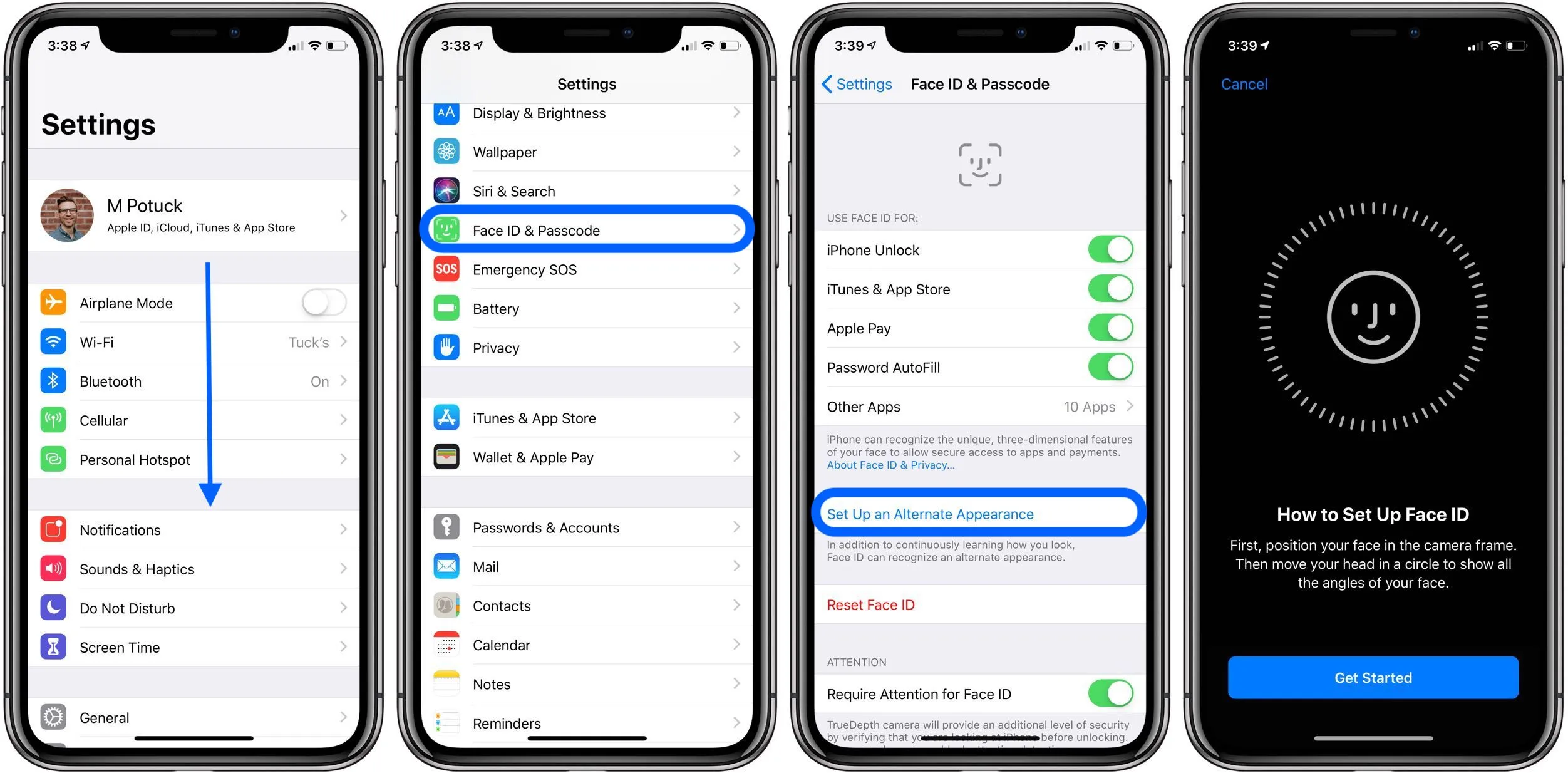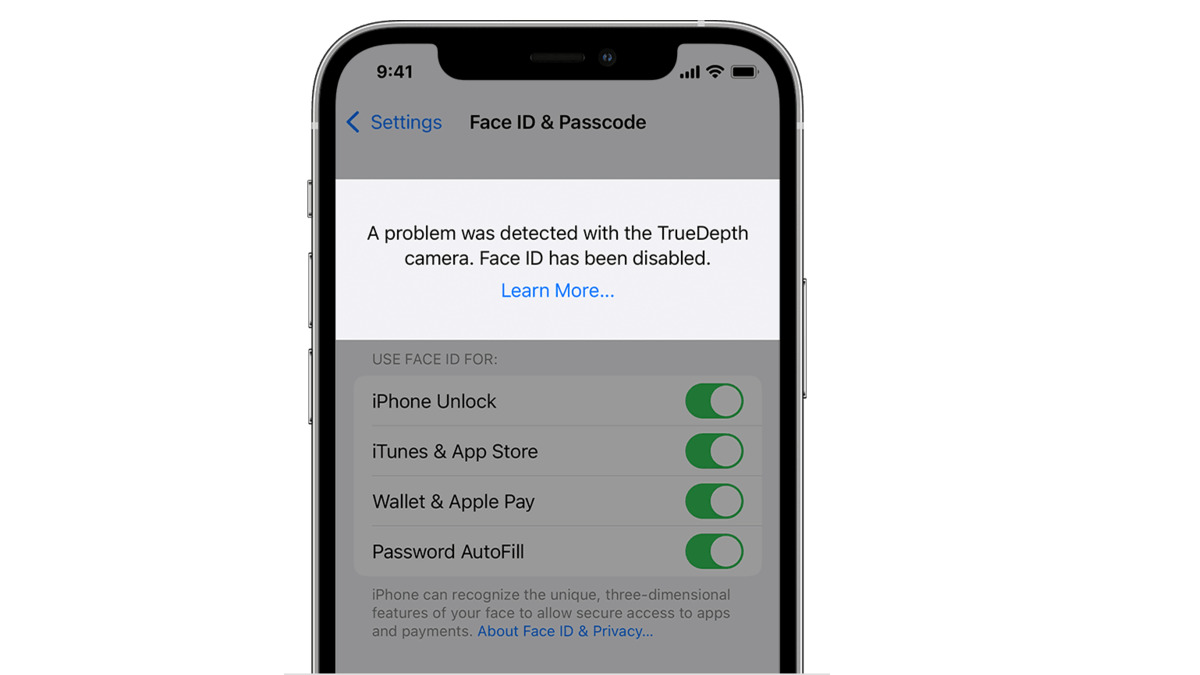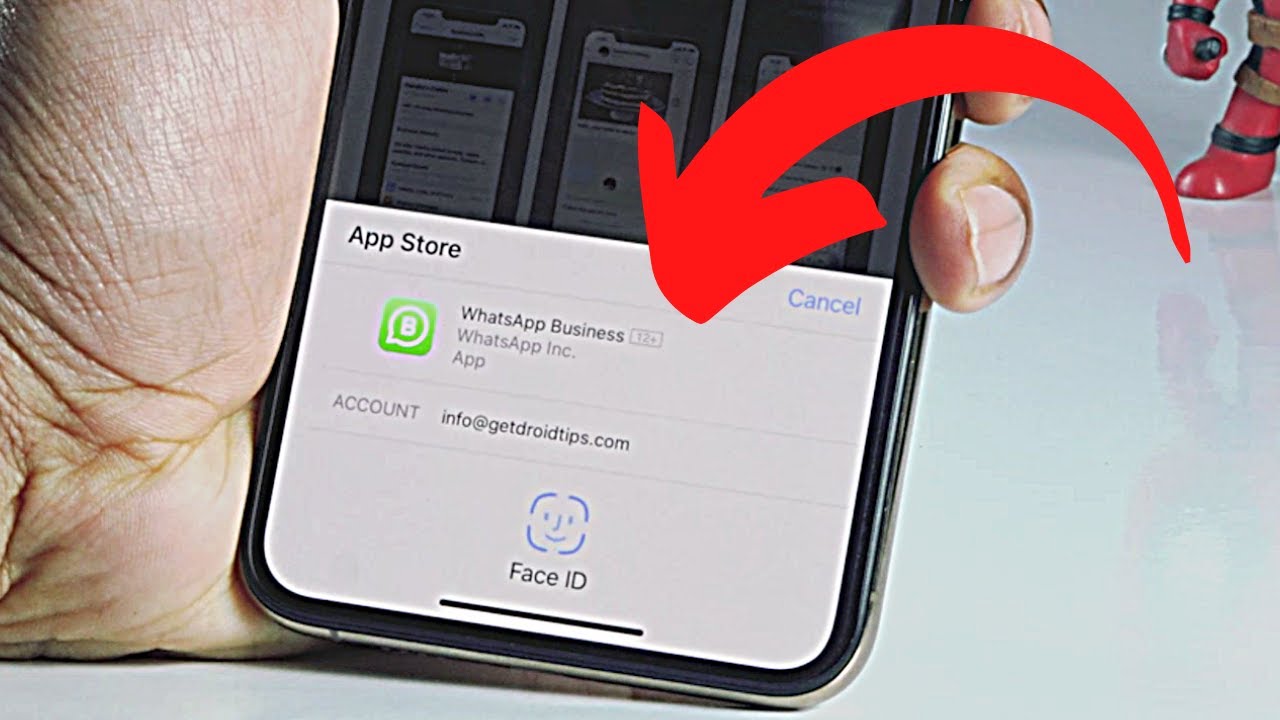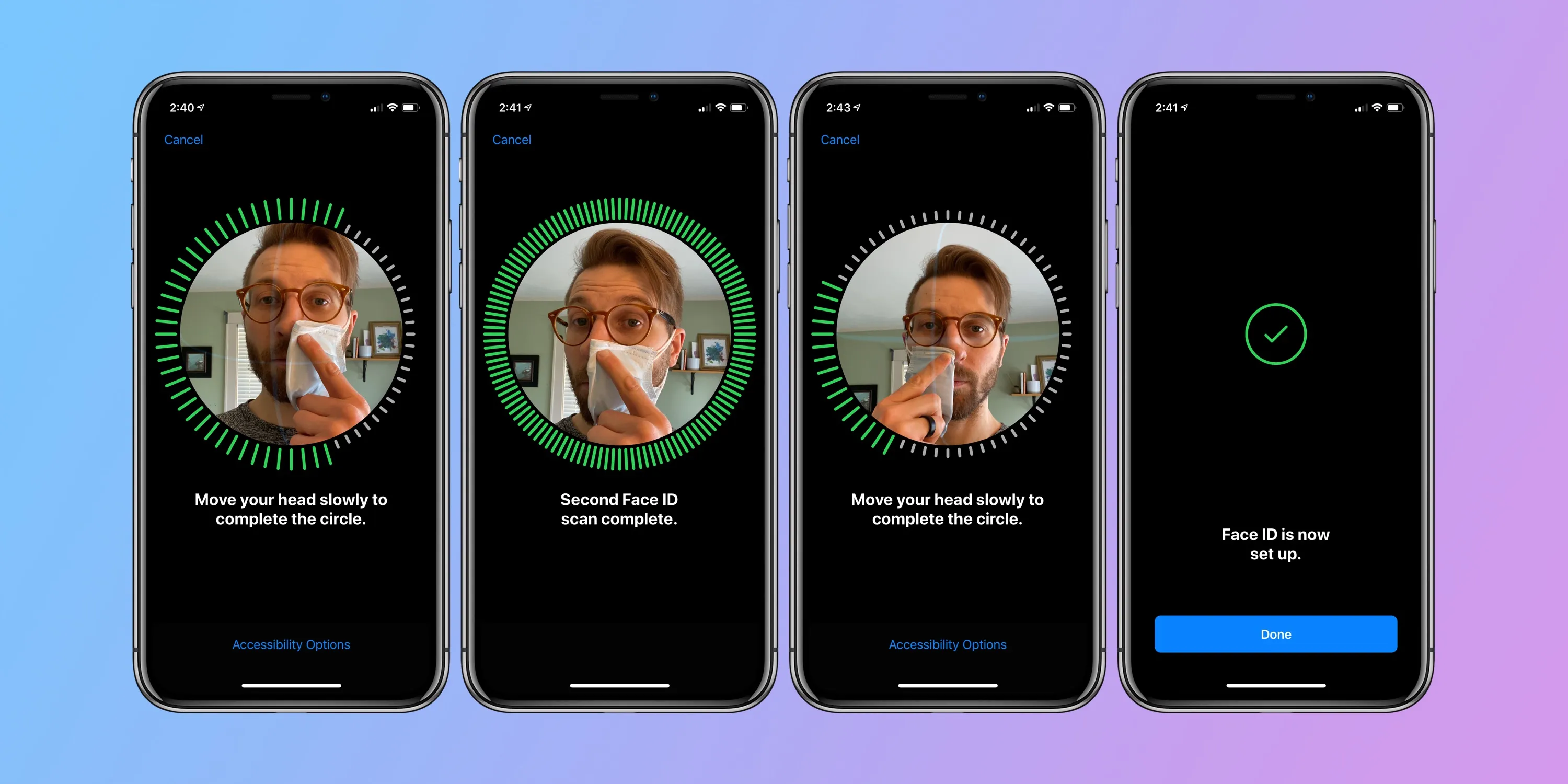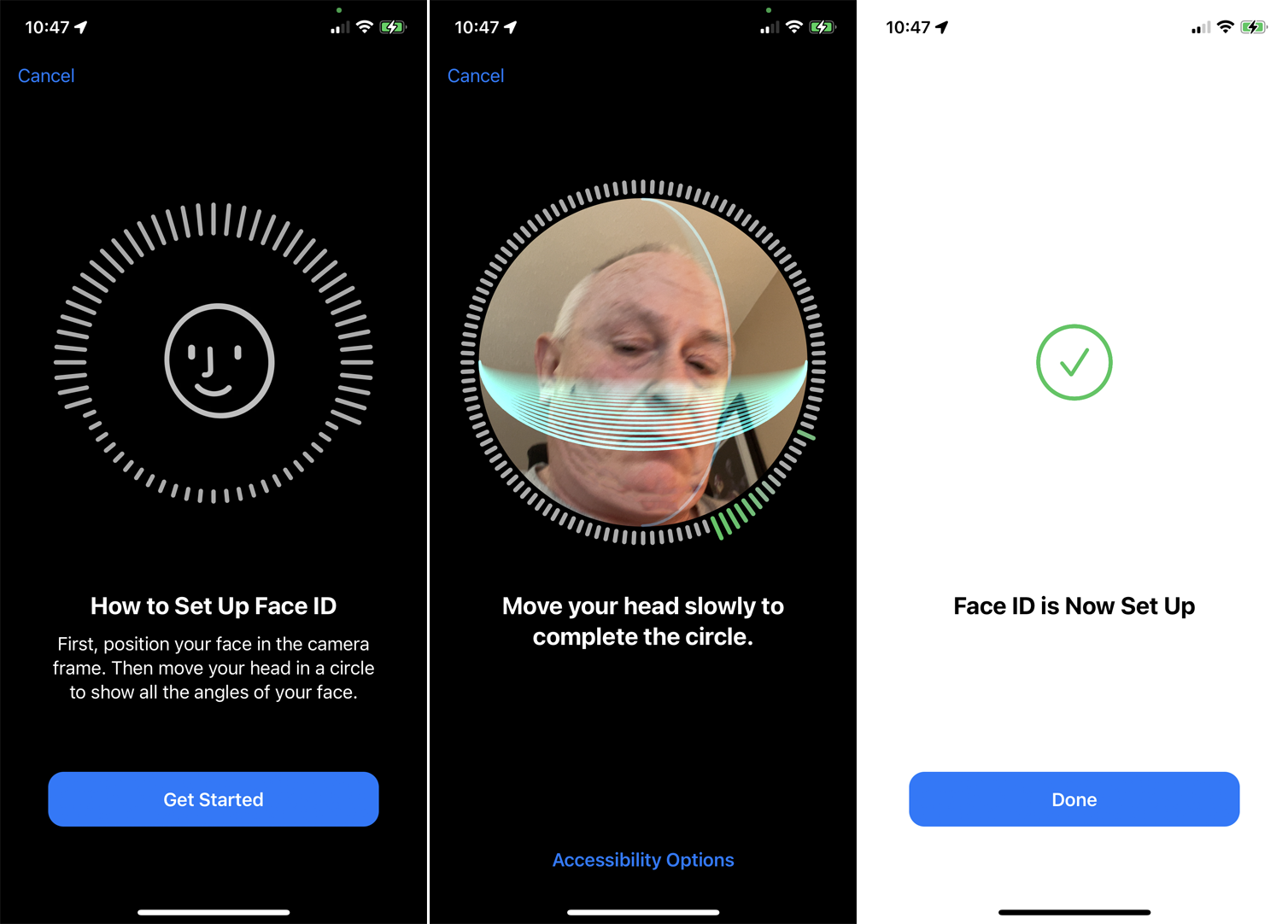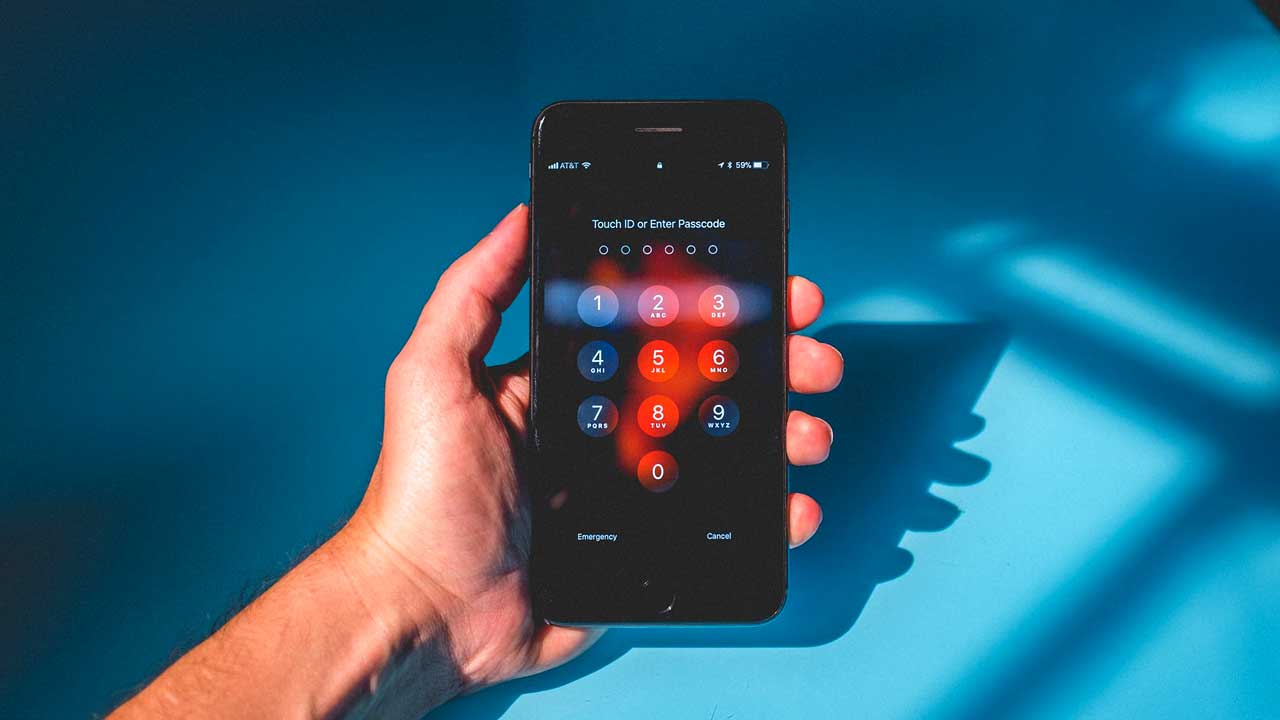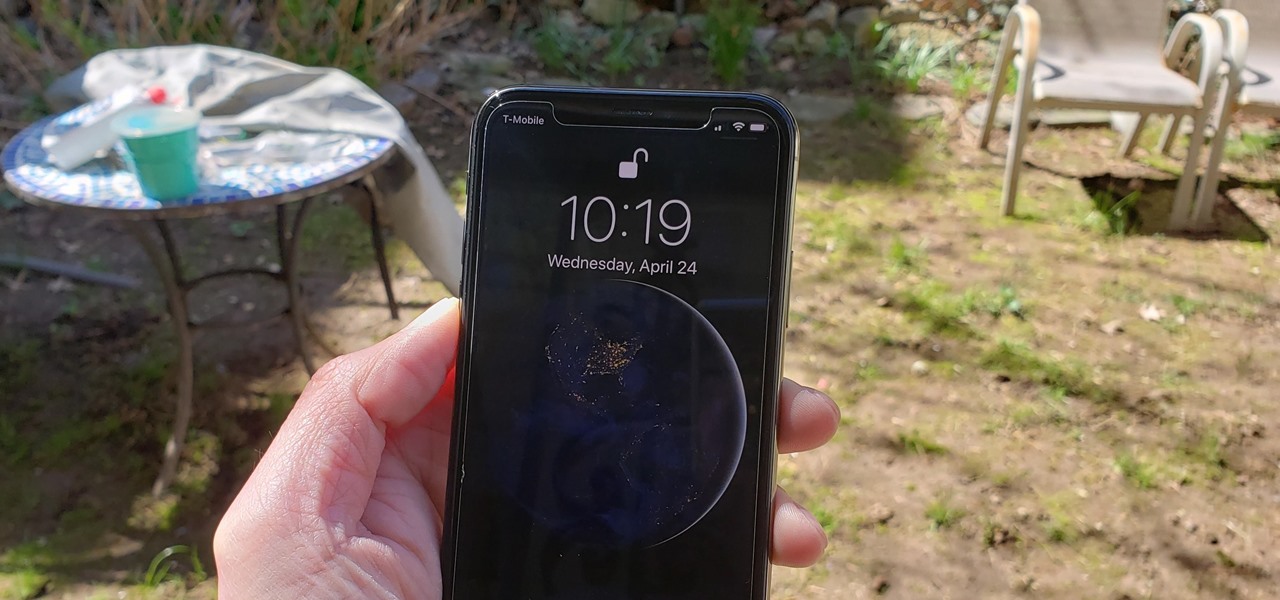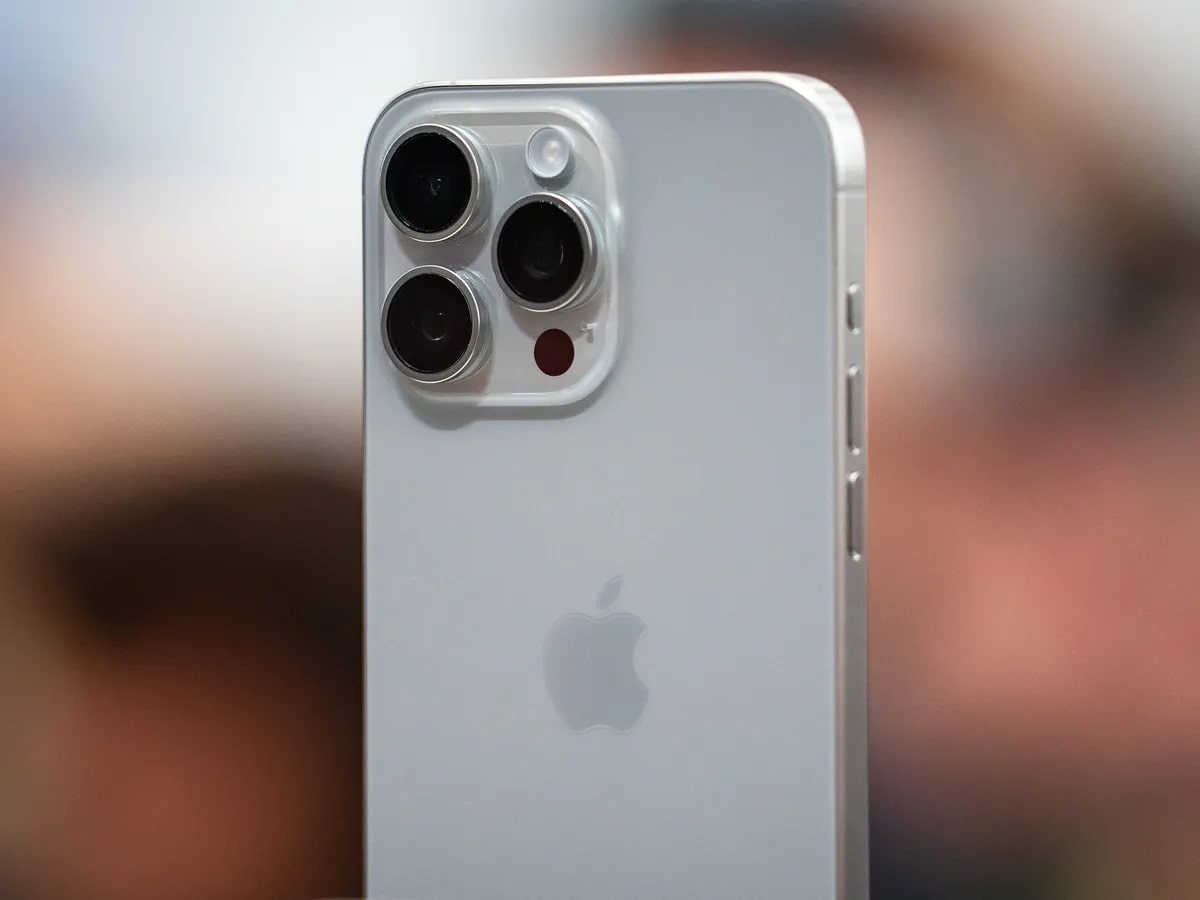Introduction
With the rapid advancements in technology, our smartphones have become an integral part of our lives. They hold a wealth of personal information and sensitive data, which is why smartphone manufacturers continuously strive to enhance the security measures on their devices. One such security feature that has gained popularity in recent years is Face ID.
Face ID is a biometric authentication technology that allows users to unlock their smartphones, authorize app access, and make secure payments simply by scanning their face. It was first introduced by Apple with the iPhone X and has since become a standard feature on their flagship models, including the latest iPhone 12 lineup.
In this article, we will explore how Face ID works, its implementation on the iPhone 12 models, and its various applications for unlocking the phone, app authentication, and making payments. We will also discuss the limitations of this technology and its significance in providing secure authentication for users.
Face ID revolutionizes the way we interact with our smartphones, offering a seamless and secure authentication method that eliminates the need for passcodes or fingerprint scanning. Let’s delve into the fascinating world of Face ID on the iPhone 12 and discover how this innovative technology enhances the overall user experience.
How Does Face ID Work?
Face ID utilizes advanced facial recognition technology to accurately verify the user’s identity. It relies on a combination of hardware and software components to quickly and securely analyze and authenticate the unique features of a person’s face.
When you set up Face ID on your iPhone 12, the TrueDepth camera system, located in the front notch of the device, captures a detailed 3D map of your face. This map, along with the infrared sensor, flood illuminator, and dot projector, work together to create a depth map and an infrared image of your face, capturing intricate details that are invisible to the naked eye.
The TrueDepth camera projects and analyzes over 30,000 invisible dots onto your face, mapping its unique contours and features. The infrared sensor then reads the pattern created by these dots, converting it into a mathematical model that represents your face.
During the authentication process, the Face ID system compares the mathematical model of your face with the one stored in the Secure Enclave, a dedicated chip within the iPhone that encrypts and securely stores sensitive data. If there is a match, your device is unlocked, and you can seamlessly access your phone.
One of the key advantages of Face ID is its ability to adapt to the changing appearances of users. It can recognize faces even if you are wearing glasses, a hat, or have changed your hairstyle. Additionally, Face ID is designed to be secure, with a one-in-a-million chance that someone else’s face could unlock your iPhone.
Overall, Face ID provides a reliable and convenient method of authentication, utilizing cutting-edge technology to ensure the security and privacy of your device. It is an essential feature that distinguishes the iPhone 12 models from other smartphones in the market.
Face ID on iPhone 12 Models
The iPhone 12 series, including the iPhone 12, iPhone 12 Mini, iPhone 12 Pro, and iPhone 12 Pro Max, all feature the advanced Face ID technology. Apple has continued to refine and improve Face ID with each new generation of iPhones, offering users a more seamless and secure authentication experience.
One notable enhancement in the Face ID system on the iPhone 12 models is the improved speed and accuracy. The second-generation TrueDepth camera used in these devices is faster and more efficient, allowing for quicker face recognition. The updated algorithms also offer improved performance in varying lighting conditions, making it easier to unlock your iPhone even in low-light environments.
The expansive Super Retina XDR display on the iPhone 12 series provides a stunning canvas for Face ID authentication. The TrueDepth camera is seamlessly integrated into the front notch, allowing for a truly edge-to-edge display without sacrificing the functionality of Face ID.
The Face ID system on the iPhone 12 models supports multiple orientations, meaning you can unlock your device regardless of whether you are holding it in portrait or landscape mode. This flexibility adds to the convenience and usability of Face ID, making it easier to unlock your phone in any situation.
Moreover, Apple has implemented a feature called “Attention Aware” in the Face ID system. This feature ensures that the device remains locked if the user’s eyes are not open and actively looking at the screen. This additional layer of security prevents unauthorized access to your iPhone, even if someone tries to unlock it while you are sleeping or not paying attention.
It is worth noting that the Face ID technology on the iPhone 12 models can be used in conjunction with other security measures, such as a passcode or a trusted device. This multi-factor authentication adds an extra layer of protection, further enhancing the security of your device and personal data.
Overall, the Face ID implementation on the iPhone 12 models showcases Apple’s commitment to delivering a seamless and secure user experience. Whether it’s unlocking your phone, authorizing app access, or making secure payments, Face ID on the iPhone 12 series offers a convenient and reliable method of authentication.
Face ID for Unlocking the Phone
One of the primary functions of Face ID on the iPhone 12 is to unlock the device. Gone are the days of typing in passcodes or using fingerprint recognition. With Face ID, you can simply glance at your phone, and it will quickly and securely authenticate your face to unlock the device.
When you pick up your iPhone 12 and raise it to eye level, the TrueDepth camera system springs into action. It illuminates your face with infrared light, capturing the unique contours and features of your face. The mathematical model of your face stored in the Secure Enclave is then compared with the live scan to determine whether it’s a match or not.
If Face ID successfully recognizes your face, the lock icon on the screen will unlock, and you can swipe up to access your home screen. This seamless and effortless authentication process eliminates the need to manually enter a passcode every time you want to use your device.
Face ID on the iPhone 12 is designed to work in various scenarios and adapt to changes in your appearance. It can recognize you even if you are wearing glasses, a hat, or have grown a beard. The advanced machine learning algorithms continuously improve Face ID’s ability to adapt to your changing appearance, ensuring a smooth and reliable unlocking experience.
Another noteworthy aspect of Face ID for unlocking the phone is its enhanced security. The probability of someone else’s face unlocking your iPhone is approximately one in a million, making it highly secure and reliable. This level of security is achieved through the complex mathematical models and algorithms used to process and compare facial data.
Additionally, Face ID is designed with privacy in mind. All facial recognition processing is done on the device itself and is not stored or sent to the cloud. This ensures that your facial data remains secure and private, only accessible to you and your device.
Overall, Face ID for unlocking the iPhone 12 adds convenience, speed, and security to your everyday device usage. It provides a seamless and reliable authentication method that adapts to your changing appearance and ensures that only you can access your personal data.
Face ID for App Authentication
Face ID on the iPhone 12 goes beyond unlocking your device; it also serves as a secure and convenient method for app authentication. With Face ID, you can authorize access to various apps on your device without the need to enter passwords or use other authentication methods.
When you launch an app that requires authentication, such as a banking app or password manager, Face ID automatically prompts you to verify your identity. By simply looking at the TrueDepth camera, Face ID quickly and accurately confirms that you are the authorized user of the device.
Using Face ID for app authentication offers multiple benefits. Firstly, it enhances convenience, as you no longer need to remember and type in complex passwords every time you open a secured app. It saves you time and effort, providing a seamless and hassle-free experience.
Moreover, Face ID adds a layer of security for app authentication. Unlike traditional passwords or PIN codes that can be easily forgotten or guessed, your face is a unique and difficult-to-forge authentication factor. The mathematical model created by Face ID ensures a high level of security, protecting your sensitive information from unauthorized access.
For further security, Face ID can also be used in combination with other authentication methods, such as Touch ID or a passcode, for certain apps. This multi-factor authentication provides an additional security measure, making it even more challenging for unauthorized individuals to access your personal data.
Another advantage of using Face ID for app authentication is its ease of use. It works seamlessly in the background, requiring no additional gestures or actions from the user. Once your face is recognized, the app opens, and you can proceed with your tasks without any interruptions.
It is important to note that app developers need to integrate Face ID compatibility into their apps to enable this feature. However, with the growing popularity of Face ID and its implementation in the iPhone 12 models, more and more apps are embracing this authentication method, offering users a seamless and secure app experience.
In summary, Face ID for app authentication on the iPhone 12 provides a convenient and secure way to access your sensitive apps. It streamlines the authentication process, saves you time, and enhances the overall security of your personal data. With Face ID, you can confidently use your favorite apps knowing that only you can authorize access.
Face ID for Making Payments
Face ID on the iPhone 12 offers a seamless and secure method for making payments, transforming the way we transact and interact with our devices. With Face ID, you can authorize payments with a simple glance, eliminating the need to enter sensitive card details or use other payment methods.
Apple Pay, the default digital wallet on the iPhone, supports Face ID for making payments at participating retailers, online platforms, and within apps. When you initiate a payment using Apple Pay, Face ID automatically prompts you to authenticate the transaction.
To authorize the payment, you simply look at your iPhone 12, and Face ID quickly and accurately verifies your identity. Once authenticated, the payment is securely processed without the need for additional steps, making the entire payment process effortless and efficient.
Using Face ID for making payments offers several advantages. Firstly, it enhances convenience by eliminating the need to carry physical wallets or enter lengthy payment information. With a simple glance, you can complete transactions quickly and securely, whether you are at a physical store or making online purchases.
Additionally, Face ID adds an extra layer of security to payment transactions. Facial recognition technology provides a highly secure method of authentication, with a low probability of unauthorized access. This ensures that your financial information remains protected from potential fraud attempts.
Furthermore, Face ID helps prevent accidental transactions or unauthorized usage. The facial recognition authentication ensures that only you, as the authorized user, can initiate and authorize payments. This reduces the risk of unauthorized transactions and provides peace of mind when using your iPhone for making payments.
It is important to note that Face ID for making payments is supported by Apple Pay, which requires the integration of participating payment providers and merchants. As Face ID becomes more prevalent and widely adopted, more businesses are embracing this secure and convenient payment method, expanding the availability of Face ID-enabled transactions.
Overall, Face ID for making payments on the iPhone 12 introduces a new level of simplicity, security, and convenience to the world of digital transactions. With just a simple glance, you can enjoy a seamless and secure payment experience, making your iPhone 12 an invaluable tool for everyday payments.
Face ID for Secure Authentication
Face ID on the iPhone 12 provides a robust and secure authentication method that offers numerous advantages over traditional security measures. By utilizing facial recognition technology, Face ID enhances the overall security and privacy of your device, ensuring that only authorized users can access sensitive information.
One of the key benefits of Face ID is its accuracy and reliability. The advanced TrueDepth camera system analyzes intricate details of your face and creates a mathematical model that is compared with the stored model in the Secure Enclave. This complex process ensures a high level of accuracy in recognizing your unique facial features, minimizing the risk of unauthorized access.
Face ID is designed to be highly secure, with a one-in-a-million chance of someone else’s face being recognized as a match. This level of security is achieved by using depth perception technology that distinguishes between a physical face and a photograph or mask. Face ID requires the presence of an actual person with a live face, adding an extra layer of protection against impersonation.
In addition to its high level of security, Face ID also focuses on the privacy of your facial data. All facial recognition processing is done on the device itself, ensuring that your personal information is not stored or sent to external servers. This on-device processing minimizes the risk of data breaches and provides you with greater control and peace of mind.
Another aspect of secure authentication with Face ID is its adaptability to different conditions and changes to your appearance. The technology is designed to recognize your face even when you are wearing glasses, hats, or have grown a beard. It continuously adapts to changes in your appearance, ensuring that you can easily and securely access your device in various scenarios.
Face ID also offers versatility in terms of multi-factor authentication. You can use Face ID in combination with other security measures, such as a passcode, a trusted device, or even Touch ID, for specific scenarios or apps. This multi-factor authentication provides an added layer of protection, making it more challenging for unauthorized individuals to gain access to your device and sensitive data.
Moreover, the attention-aware feature in Face ID ensures that the device remains locked unless you are actively looking at the screen. This feature prevents others from gaining access to your iPhone by simply pointing it towards your face without your knowledge.
In summary, Face ID on the iPhone 12 offers a highly secure and reliable authentication method. Its advanced technology, adaptability to various conditions, and commitment to privacy make it an integral part of a comprehensive security approach. With Face ID, you can confidently secure your device and protect your personal information with ease.
Face ID Limitations
While Face ID on the iPhone 12 models provides a seamless and secure authentication experience, it does have certain limitations that users should be aware of. Understanding these limitations can help manage expectations and ensure the appropriate use of Face ID.
Firstly, Face ID relies on the visibility of your face. In low-light or dark environments, the TrueDepth camera may struggle to accurately capture and authenticate your face. Although Apple has made improvements in this area, it is still recommended to use Face ID in well-lit conditions for optimal performance.
Another limitation of Face ID is the need to directly face the device. If your device is positioned at an awkward angle or you are not facing it directly, Face ID may have difficulty recognizing your face and may prompt you to enter a passcode instead. This can occur when the device is lying flat on a table or held at an extreme angle.
Face ID can also face challenges when there are significant changes to your appearance. This may include wearing certain accessories that partially cover your face, such as a scarf or sunglasses, or undergoing substantial changes in hairstyle or facial hair. While Face ID is designed to adapt to incremental changes, more significant alterations might require re-enrollment or the use of an alternative authentication method.
Some users may have concerns about the security implications of using facial recognition technology. While Apple has implemented robust security measures to protect facial data, it is important to understand that no authentication method is entirely foolproof. There is a remote possibility that someone could bypass Face ID using sophisticated techniques, such as creating a high-quality replica of your face. Although the likelihood is extremely low, users should exercise caution and consider using additional security measures if required.
It is worth mentioning that not all apps and services support Face ID authentication. While the number of apps integrating Face ID is growing steadily, some apps may still rely on traditional authentication methods such as passwords or Touch ID. Users should be prepared to enter passwords or use other methods for authentication in such cases.
Lastly, Face ID has different accuracy rates for identical twins and children under the age of 13. While these groups can still use Face ID, there may be instances where the system may confuse similar-looking individuals or struggle to recognize the faces of younger users.
Despite these limitations, Face ID remains a highly advanced and effective facial recognition technology. It offers convenience, security, and privacy for most everyday scenarios, but understanding and acknowledging its limitations will help users make informed decisions about their device’s security measures.
Conclusion
Face ID on the iPhone 12 models represents a significant advancement in biometric authentication technology. It offers a secure and convenient method for unlocking the device, authorizing app access, and making payments. With its advanced facial recognition capabilities, Face ID has transformed the way we interact with our smartphones, providing a seamless and intuitive user experience.
This technology uses a combination of hardware and software components to accurately capture and analyze the unique features of a person’s face. The iPhone 12’s TrueDepth camera system creates a detailed 3D map of the face, allowing for fast and reliable verification.
Face ID on the iPhone 12 series offers several notable features and benefits. It adapts to changes in appearance, recognizing users even with glasses, hats, or changes in hairstyle. The attention-aware feature ensures that the device remains locked unless the authorized user is actively looking at the screen.
While Face ID provides a high level of security, it is essential to be aware of its limitations. Factors such as low lighting conditions or significant changes to appearance can affect its performance. Some apps and services may not yet support Face ID authentication, requiring alternative means of authentication.
In conclusion, Face ID on the iPhone 12 combines convenience, security, and privacy to deliver a seamless and trustworthy authentication experience. Whether it’s unlocking the device, authorizing app access, or making payments, Face ID offers a level of security and ease of use that sets it apart from traditional authentication methods. With its continuous advancements and increasing integration, Face ID is sure to play a significant role in the future of smartphone authentication.







